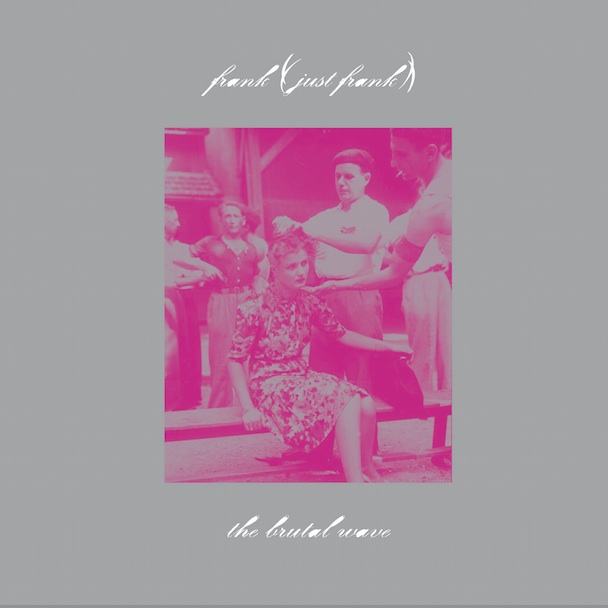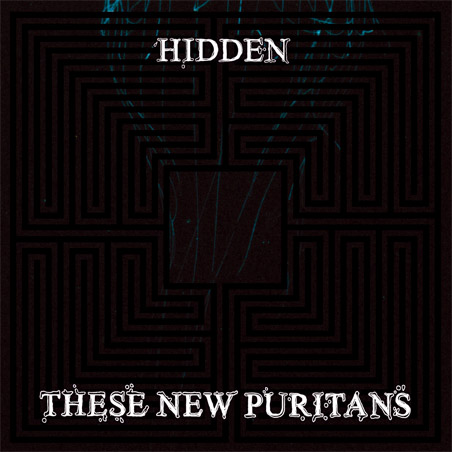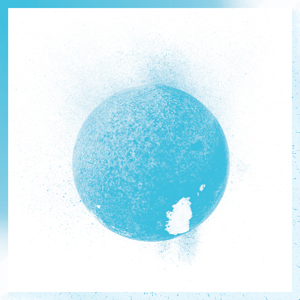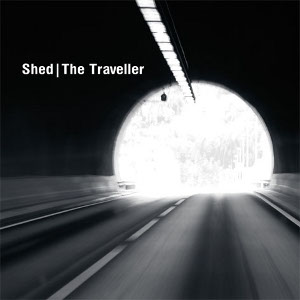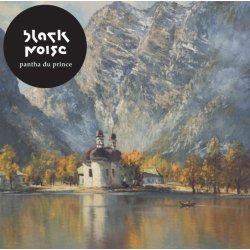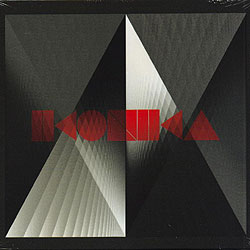From Tuesday November 30 to Friday December 3, we’ll be counting down our 40 favourite albums released this year.
We’ll be listing them in groups of ten, so today it’s entries 40 to 31, on Wednesday it’s 30-21, Thursday 20-11, and finally 10-1 on Friday.
Next week, we’ll be ranking our 100 favourite tracks of the year, and we’ll end the year on a list of our favourite reissues. If you’re still yet to read our rundowns of the best record labels, breakthrough artists and soundtracks of the year, then they’re collected in the bottom left of the FACT homepage, along with the rest of our end of 2010 features so far.
40: ARIEL PINK’S HAUNTED GRAFFITI
BEFORE TODAY
(4AD)
‘Round and Round’
Few artists’ legacies loomed larger over 2010 than Ariel Pink’s. A huge inspiration on the hypnagogic pop/chillwave wave of US indie artists, this year Pink, along with his band Haunted Graffiti, signed to 4AD, recording their first ever album with a proper studio set-up. The results were inconsistent, but as ever, when Ariel gets it right there are few pop songwriters close to his level.
39: MOUNT KIMBIE
CROOKS & LOVERS
(HOTFLUSH)
‘Mayor’
Mount Kimbie’s relationship to dubstep was, from the off, a tangential one; their music, though often attuned to the needs of the dancefloor, rarely prioritises them. The duo’s considered, painterly approach to music was always going to suit the wide canvas of the album format, but on Crooks & Lovers we would have liked to have seen fewer wispy watercolours and more of the lively oils that characterised their unassailable debut EP, Maybes. Still, when it’s good, this record is very good: a kind of garage-swung, R&B-sugared update of early noughties Kompakt.

38: DYLAN ETTINGER
NEW AGE OUTLAWS: THE DIRECTOR’S CUT
(NOT NOT FUN)
‘Shandor’s Dream’
The American underground spewed out an unbelievably high volume of lo-fi synthesizer records this year, most of them the worst kind of charlatan dross – especially when compared to Dylan Ettinger’s elegantly wrought New Age Outlaws. Originally released on cassette last year, this year’s “Director’s Cut” on vinyl and digital saw its maker return to his master tapes, adding new parts and altering the final track sequence. What makes Ettinger’s spaced-out analogue friezes so compelling is their jazz inflections, with Hassell-esque horns and sitar-like sounds adrift amid oscillating synth sequences in the tradition of Vangelis, Tangerine Dream et al. Hallucinatory and emotionally affecting, we won’t be surprised if the appeal of this LP outlasts that of more widely acclaimed offerings from Emeralds and Oneohtrix Point Never.
37: DJ RASHAD
JUST A TASTE VOL. 1
(GHETTOPHILES)
‘Ghost’
2010 was the year that juke and footwork broke the (relative) mainstream, mostly due to efforts from the UK’s Planet Mu. Back in Chicago, hometown label Ghettophiles released a steady supply of singles, and will close the year on a pair of albums from scene staple DJ Rashad. Just a Taste, due out on December 14, is our pick, sporting Rashad takes on Bobby Caldwell, Gil Scott-Heron and more with those ultra-padded basslines that you feel before you hear.
36: FRANK (JUST FRANK)
THE BRUTAL WAVE
(WIERD MUSIC)
‘Mr Itagaki’
One of the year’s most unexpected and durable delights, The Brutal Wave is the debut album by Parisian duo Frank (Just Frank), released on Peter Schoolwerth’s Wierd. Though crucially steeped in the aesthetic influence of both cold wave and black metal, F(JF)’s own music is richly romantic post-punk pop, sung in both English and French and based around song-structures and galloping guitar parts that consciously reference – among other things – The Cure circa Seventeen Seconds and Pornography. But there’s more than mere pastiche going on here: on songs such as ‘Mr Itagaki’ this band hit as hard, if not harder, than their heroes ever did.
35: THESE NEW PURITANS
HIDDEN
(ANGULAR)
‘Time Xone’
Ambition appears to be all but dead in British “indie”, so These New Puritans’ Hidden instantly piqued our interest. Working primarily – and improbably – with dancehall-inspired rhythms and, er, woozy colliery brass, this was the sound of a young band trying, shock horror, to make something original, and going about it with a commendable air of seriousness and self-importance. Frightfully earnest – and beautiful – instrumental opener ‘Time Xone’ sets the scene, and the sheer baroque gumption of ‘Orion’ is astonishing, but elsewhere the dense, fussy arrangements can mask a paucity of real songcraft, while the overall production sheen too often softens the hard edges that are, for us, the source of the record’s appeal.
34: YEASAYER
ODD BLOOD
(SECRETLY CANADIAN)
‘Ambling Alp’
One of the year’s first “big” albums, Odd Blood saw Brooklyn’s Yeasayer in gracefully psychedelic form, shot in higher definition than ever before. Some, such as FACT reviewer Joe Muggs couldn’t stomach the album’s glossy finish, but for us few records soundtracked the beginning of the year with the same combination of power and poise.
33: URBAN TRIBE
URBAN TRIBE [AKA PROGRAM 1-12]
(MAHOGANI MUSIC)
‘Program 1’
Returning with their first collective album release since 1998’s Mo’Wax classic The Collapse Of Modern Culture, Sherard Ingram’s Urban Tribe – featuring Carl Craig, Kenny Dixon, Jr. and Anthony Shakir – effortlessly affirmed their superhero status with a set of gritty, laconic beatdown futurism. Special mention goes to ‘Program 7’ and ‘Program 1’, two tracks that formed a kind of unwitting diagonal between Detroit house and UK funky, grime and dubstep.
32: BATHS
CERULEAN
(ANTICON)
‘Hall’
A milky dream of hip-hop, Boards of Canada-style electronica, ambient and indie, Will Wiesenfeld’s debut album as Baths was far from a perfect record, but in its imperfections lay its strength. This is an album where self-consciousness doesn’t exist; Baths frequently giving everything, good and bad, to his listeners.
31: SHED
THE TRAVELLER
(OSTGUT TON)
‘Keep Time’
A new album from this consummate Berlin producer was always going to rank among the best released this year; the real question would be how it compared to his remarkable 2008 debut, Shedding The Past. While even more impeccably sculpted, it must be said that The Traveller lacks – perhaps inevitably – some of the outsider passion and impertinence of its predecessor (Shed’s reappropriation of the breakbeat, for instance, now feels like a familiar part of his sonic signature rather than a radical gesture). But as suggested by the title, our man isn’t interested in analysing his music, and never has been, he just gets on with making it. And, when all’s said and done, who else on earth can build a beat as itchily compelling as ‘Keep Time’?
30: PANTHA DU PRINCE
BLACK NOISE
(ROUGH TRADE)
;hl=en_US” />Loading Video…
;hl=en_US” allowscriptaccess=”always” allowfullscreen=”true”>
‘Lay in a Shimmer’
Black Noise, the third album by romantic techno poster boy Pantha du Prince and his first for Rough Trade, had a lot to live up to – his last album, This Bliss, is one of the all-time great techno records (and finished in the top 10 of our round-up of albums of the last decade, natch). Black Noise didn’t necessarily find Pantha adding much new to the table, bar a more conceptual approach to sampling and a welcome collaboration with Animal Collective warbler Panda Bear, but it was proof, particularly in the underwater lights of ‘Lay in a Shimmer’, the gold leaf funeral march ‘Es Schneit’ and the wind-tunnel trance of ‘Behind the Stars’, that Pantha’s still among the very elite of contemporary house and techno musicians.
29: DJ ROC
THE CRACK CAPONE
(PLANET MU)
;hl=en_US” />Loading Video…
;hl=en_US” allowscriptaccess=”always” allowfullscreen=”true”>
‘They Can’t Fuck Wit Me’
What you see is what you get with The Crack Capone. The second juke full-length Planet Mu released this year, housed in a Dancemania tribute sleeve, it’s dancefloor roller after dancefloor roller, with rugged beats that operate in the middle ground between hip-hop and loop-based dance music, eyes down and refusing to give much away.
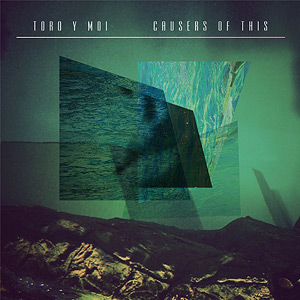
28: TORO Y MOI
CAUSERS OF THIS
(CARPARK)
;hl=en_US” />Loading Video…
;hl=en_US” allowscriptaccess=”always” allowfullscreen=”true”>
‘Blessa’
Toro Y Moi is probably going to make a classic album before too long, but Causers Of This isn’t quite it. What lets it down, curiously, is how bright-eyed and bushy-tailed it (the winsome, harmony-drenched ‘Blessa’ and ‘Minors’, for instance, sound like little more than Panda Bear minus the gravitas). We’re much happier when Toro cuts loose and gets weird – as on the sun-warped R&B of ‘Fax Shadow’ or the off-kilter filter disco of the title track. If he’d shaved off some of those more derivative numbers and dulled the production polish a little, we’d have been dealing with a top 10 sure shot.
27: IKONIKA
CONTACT, LOVE, WANT, HAVE
(HYPERDUB)
;hl=en_US” />Loading Video…
;hl=en_US” allowscriptaccess=”always” allowfullscreen=”true”>
‘Red Marker Pens (Good Ending)’
The title of Ikonika’s debut album may have been made up of four quite complementary words, but it’s a record that thrived on contrast – between ‘Idiot”s opposing synth lines that seem to snake around each other, battling to be the lead; between tough drums and fragile melodies on ‘Video Delays’; between exhilarating tracks (‘Look (Final Boss Stage)’) and mournful ones (‘Red Marker Pens’) – and emerged from its confused journey as one of the young year’s most unique, fully realised and lasting long-players.
26: HYPE WILLIAMS
UNTITLED
(CARNIVALS)
;hl=en_US” />Loading Video…
;hl=en_US” allowscriptaccess=”always” allowfullscreen=”true”>
‘Untitled’
Long sold-out of its super-limited press, Hype Williams’ untitled LP for Carnivals is destined to be remembered as a classic. The brand of mannered postmodern exotica which characterises much of the album invites obvious comparisons to US hypnagogists James Ferraro and Spencer Clark, but elsewhere HW come over like a dystopian Art of Noise, or a more streetwise, smoked-out ally of the Ghost Box / Mordant Music crew. For all their self-consciously lo-fi approach, the London-Berlin duo have a frazzled pop sensibility that they choose to riff on rather than suppress, making for an album as curiously hummable as it is unhinged.
25: DIGITAL MYSTIKZ
RETURN II SPACE
(DMZ)
;hl=en_US” />Loading Video…
;hl=en_US” allowscriptaccess=”always” allowfullscreen=”true”>
‘Mountain Dread March’
DMZ, one of the original dubstep labels and certainly one of the most rewarding dance labels of our generation, made the step up to the album format this year – sort of. True to the label’s role as one of the modern gatekeepers of UK soundsystem culture, Return II Space – billed as a Digital Mystikz album, but only comprised of solo Mala productions – simply took the form of three heavyweight 12″ records, meticulously mastered, rendered and packaged. A beautiful object that yielded some of the most eagerly-awaited dubstep tracks yet.

24: GIL-SCOTT HERON
I’M NEW HERE
(XL)
;hl=en_US” />Loading Video…
;hl=en_US” allowscriptaccess=”always” allowfullscreen=”true”>
‘New York is Killing Me’
Who would have thought that the croaky-throated soul-poet would have made one of his bravest and most rewarding albums now? Framed by the solemn string arrangements of Lawson White and sure production hand of XL boss Richard Russell (for whom this project has been a labour of love), Heron’s battleworn burr hangs in mid-air throughout, seeming to impart knowledge from the other side of some unknowable divide. The absolute starkness of I’m New Here is what makes it so fiercely compelling, and indeed its weakest tracks are the most “musical”; the real beauty can be found in the raw, snapclapping lament of ‘New York Is Killing Me’, ‘Where Did You Go’ (Tom Waits by way of Pan Sonic) ‘ and, in Your Soul And Mine’, a track so bare-bones that it’s barely there at all.
23: LA VAMPIRES & ZOLA JESUS
LA VAMPIRES MEETS ZOLA JESUS
(NOT NOT FUN)
;hl=en_US” />Loading Video…
;hl=en_US” allowscriptaccess=”always” allowfullscreen=”true”>
‘Bone is Bloodstone’
Her Stridulum II LP garnered most of the attention from a mainstream keen to find the next Fever Ray, but Zola Jesus’s most impressive and idiosyncratic release in 2010 was this collaboration with the unspeakably brilliant Amanda Brown AKA LA Vampires. Taking inspiration from Jamaican dub – right down to the amazing battle-style cover art – the duo crafted a lopsided psychedelic masterpiece, replete with bowel-shuddering basslines, phantasmagoric vocals and tough, snap-clap-heavy rhythm. A complete oddity, and one which will continue to enchant and perplex long after the hype surrounding Zola’s gothier incarnation has abated.
22: THE-DREAM
LOVE KING
(RADIO KILLA / DEF JAM)
;hl=en_US” />Loading Video…
;hl=en_US” allowscriptaccess=”always” allowfullscreen=”true”>
‘Love King’
Stateside super-producer The-Dream has been behind much of the best pop music of recent years, from chart-topping singles by Rihanna, Beyonce and Ciara to the examinations of love, greed, sex and devotion that he persues through his solo albums.
Love King, the third in a trilogy of Dream LPs and mooted as his last (though he’d already revealed plans for a fourth, Love Affair by the time this came out), wasn’t quite the album last year’s Love vs. Money was, with Dream’s ego occasionally getting the better of him – had he edited this album with the same judiciousness he presumably applies to acts like Electrik Red and Ciara, then we could have been on for a classic; instead, we get the ‘Sex Intelligent’ section dragged out for close to 10 minutes, and unnecessary cuts like ‘Panties to the Side’ making the cut while ‘All Black Everything’ and ‘Veteran’ languish as bonus tracks. Mostly though, Dream shone on Love King, with ‘F.I.L.A.’, ‘Florida University’ and its title track among his very best solo work, and at the album’s centrepiece, one of hip-hop theatre’s greatest recent triumvirates in ‘Yamaha’, ‘Nikki Pt. 2’ and ‘Abyss’.
21: SANDWELL DISTRICT
FEED FORWARD
(SANDWELL DISTRICT)
‘Speed + Sound (Endless)’
Sandwell District’s reputation might be built on stripped-down, post-Sahko techno floor-fillers, but for Feed Forward the producers involved – principally Function, Silent Servant and Regis – have taken full advantage of the increased space for expression that the album format affords. Don’t get us wrong, there’s no shortage here of tunnelistic 4/4 action on offer, with ‘Immolare (First)’, ‘Immolare (Final)’ and ‘Hunting Lodge’ all assuredly warehouse-friendly, but the most interesting tracks are those that dare to be a little more pensive. ‘Svar”s krautrock glow is irresistible, while ‘Immolare (Main)’ embodies Regis’s mastery of tricksy but funk-assured syncopation, and on ‘Speed+Sound (Endless)’ coarse industrial noise gives birth to a synth refrain of frankly heart-stopping beauty. Romanticism isn’t a quality one would ordinarily associate with Sandwell District, but it’s here in abundance. [NOTE: this album is due to be released in December 2010]

20: SOLAR BEARS
SHE WAS COLOURED IN
(PLANET MU)
;hl=en_US” />Loading Video…
;hl=en_US” allowscriptaccess=”always” allowfullscreen=”true”>
‘Twin Stars’
If, at the start of the year, you’d told us that krautrock and kosmische influences would inform some of the year’s most arresting releases, we’d have yawned demonstratively and told you to get out of town. Solar Bears’ She Was Coloured In is just one of several records to have proven us wrong. ‘Twin Stars’ – somewhere between Cluster, a Jean-Michel Jarre Zelda soundtrack that never was, and, er, Energy 52’s ‘Cafe Del Mar’ – is a contender for track of the year, sleepy synth-scape ‘Solarization’ and post-rock rumbler ‘Division’ aren’t far behind.
The album is, at times, a little bit too lush and luxuriant for its own good, and whenever drums intervene it all goes a bit pear-shaped, the uncouth “grooviness” of ‘Forest of Fountains’ and ‘Primarily Colours At The Back Of My Mind’ reminiscent of the worst kind of 90s chill-out. But the whimsy and innocence of She Coloured Me In is fundamental to its charm; unlike so many engaged in making modern-day synthesizer music, Solar Bears are less concerned with hipster box-ticking and more with creating an immersive, emotive sound-world. When they get it right, it’s really rather beautiful.

19: LONE
EMERALD FANTASY TRACKS
(MAGIC WIRE)
;hl=en_US” />Loading Video…
;hl=en_US” allowscriptaccess=”always” allowfullscreen=”true”>
‘Cloud 909’
Nottingham’s Matt Cutler has had a strong year on the singles front, with ‘Once in a While’ and ‘Pineapple Crush’ managing to become contemporary anthems while leaning strongly on Detroit techno and early ’90s hardcore, but we didn’t expect this “mini-album” – a double pack of 12″s on his recently inaugurated Magic Wire label – to be quite so… well, magical. Aided by some of the best track titles of the year (‘Cloud 909’, ‘Moon Beam Harp’, The Birds Don’t Fly This High’), Lone conjured up a similarly arcade-y world to Ikonika and Guido’s albums, but filtered it through that honey-daubed lens that served his past album Ecstasy and Friends so well. What really made this stand out though is how spritely and kinetic it was; where many of Lone’s peers in both the dance music and hypnagogic fields seem mournful for the past, EFT seems more like a celebration of the present that birthed it.

18: SWANS
MY FATHER WILL GUIDE ME UP A ROPE TO THE SKY
(YOUNG GOD)
;hl=en_US” />Loading Video…
;hl=en_US” allowscriptaccess=”always” allowfullscreen=”true”>
‘Eden Prison’
Nothing’s sacred anymore. Recent years have seen countless “legends” of music return, for no real reason other than to shit on their legacy and make a bit of money on the live circuit in the process. In January of this year, the myspace of Swans, one of the most brilliant groups to ever crawl from the underbelly of New York, was edited to simply say “SWANS ARE NOT DEAD”. Did we fear the worst? We certainly suspected it, but Swans returned with a record that not only stands up to anything from their vast back catalogue, but also stands apart from it; an obsessively crafted, organic statement with no real peers to compare it to, and a reminder that old bands Don’t need to Look Back to remain vital.

17: JOHN ROBERTS
GLASS EIGHTS
(DIAL)
;hl=en_US” />Loading Video…
;hl=en_US” allowscriptaccess=”always” allowfullscreen=”true”>
‘Navy Blue’
In some ways, John Roberts’ Glass Eights stands out because of the lack of good contemporary house and techno albums around – yes, it’s one of the genre’s best LPs of the year, but where’s the competition? Still, to use that oldest of footballing cliches, you can only beat what’s put in front of you, and with his first full-length, Dial’s new American hero does just that, taking cues from labelmates Lawrence and Pantha du Prince (heavy basslines + fluttery piano melodies = a good time) while indulging his beatless side with excursions into the modern classical field.

16: JJ
JJ n° 3
(SINCERELY YOURS)
;hl=en_US” />Loading Video…
;hl=en_US” allowscriptaccess=”always” allowfullscreen=”true”>
‘You Know’
jj make the realest music out there. Like their idol Lil Wayne, their lyrics are open, honest, cryptic and confused, with arrangements packed with tragedy, sunshine and the saddest kind of nostalgia. They’re still at their chrysalis stage, but jj n° 3 is another precious, coral-toned transmission from them, and should be cherished. RIYL: Zlatan Ibrahimovic, ATC, Young Money.
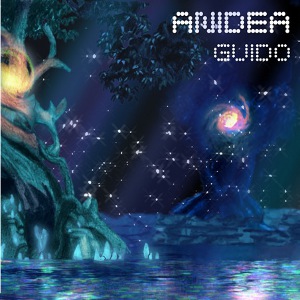
15: GUIDO
ANIDEA
(PUNCH DRUNK)
;hl=en_US” />Loading Video…
;hl=en_US” allowscriptaccess=”always” allowfullscreen=”true”>
‘Beautiful Complication’
This album was an irresistible breath of minty fresh air, a close-to-perfect fusion of R&B, grime and pop into a dubstep template equally accessible and enjoyable to scene stalwarts and outsiders alike. “Enjoyable” really is the key word: forget experimentation, though there’s plenty on offer here; Anidea wears its heart on its sleeve and is just so easy to fall in love with. It would be fair to say that Guido can now join the pantheon of Important Dubstep(-ish) Album Artists along with Burial, Pinch, Shackleton, Kode9 and Peverelist, but with his unique grasp of melody, colour and instrumentation – most apparent on ‘Orchestral Lab’ and ‘Mad Sax’ – maybe he deserves a section all to his own.

14: AUTRE NE VEUT
AUTRE NE VEUT
(OLDE ENGLISH SPELLING BEE)
;hl=en_US” />Loading Video…
;hl=en_US” allowscriptaccess=”always” allowfullscreen=”true”>
‘Drama Cum Drama’
An album as stomach-turning as it is addictive, Autre Ne Veut is a radical repurposing and toxification of 80s and early 90s US teen-pop tropes (a world bookended by The Breakfast Club and Saved By The Bell). Two Days of Rain’ is more stirring and catchy than the super-saturated prom soundtracks it satirizes, while ‘New Depth’ and ‘Drama Cum Drama’ combine swooningly romantic melody and dubbed-out, Timbaland-esque production tics with a flair not glimpsed since Discovery’s severely underrated 2008 LP. Think Washed Out with bigger bollocks, better tunes and much stronger drugs.

13: SHACKLETON
FABRIC 55
(FABRIC)
In some sense a “best of” his recent work. Fabric 55 includes new cuts from Shackleton’s recently inaugurated Woe To The Septic Heart label, several from last year’s zinging Perlon triple-pack Three EPs, a wealth of unreleased material and a couple of enduring numbers from his Skull Disco and Mordant Music days. But what makes the album remarkable is the way it captures the breakneck intensity of the producer’s club sets: his controlled yet ineffably ragged modulation of minimalist, ‘floor-friendly grooves, dense tribal polyrhythm and rough industrial textures. It’s the sound of an artist in his element and confirms what we’ve known for years – Shackleton isn’t just in a different league to the rest, he’s invented his own superior sport. Once you’ve tried Shack, can you ever go back?

12: BIG BOI
SIR LUCIOUS LEFT FOOT: SON OF CHICO DUSTY
(PURPLE RIBBON / DEF JAM)
;hl=en_US” />Loading Video…
;hl=en_US” allowscriptaccess=”always” allowfullscreen=”true”>
‘Daddy Fat Sax’
So many questions were left unanswered by Big Boi’s long-awaited solo debut. Why did it take so long? Why was his partner in Outkast, Andre 3000 blocked from appearing on the record (in terms of rapping anyway; he does manage to sneak production in there)? Why is Lucious spelt that way in the title? Who thought it was a good idea for those Vonnegutt guys to appear on ‘Follow Us’?
Still, some minor gripes aside, Lucious lived up to the multiple years of hype that had preluded its release. Previous singles ‘Shutterbugg’, ‘Shine Blockas’ and ‘General Patton’ lost none of their sheen in the time it took to get the record out, while ‘Tangerine’, ‘You Ain’t No DJ’ and ‘Daddy Fat Sax’ seemed like instant anthems for fans of hip-hop and beyond. Perfectly aware of its position in both rap’s lineage, but also that of Prince and P-Funk (and, indeed, Outkast), Lucious Left Foot casts its eye to casino funk, cosmic boogie, electro, backroom R’n’B and soul while staying defiantly hip-hop; sounding fuck-a-major-label while being released on Def Jam. It’s not an album full of surprises, but rather than a lack of quality, that’s simply testament to the fact that this is how a Big Boi solo LP always should have sounded.

11: JAMES FERRARO
LAST AMERICAN HERO
(OLDE ENGLISH SPELLING BEE)
Jim Ferraro makes a lot of music, and while all of it contributes to the mythology surrounding him, a lot of it is ephemeral, and happy to be that way. Last American Hero (presumably a nod to the ’73 Jeff Bridges stock-car-racing movie), however, feels like a grand statement. Originally released on Taped Sounds cassette and taking vague inspiration from the temples and ghost channels of US consumer culture – the cover art depicts an Best Buy supermarket, resplendent in its banality, and the sleeve-notes invoke Google, guilt complexes and energy drinks – Ferraro conjures a sun and cable-fried landscape with bending, country-tinged guitar lines, prismatic synths and a whole world of reverb.
Whereas sometimes his work can feel glib, there’s a current of real emotion coursing through the two sides of Last American Hero – its melody is haunting in the extreme, and its corroded surfaces gradually reveal a chassis of inconsolable melancholy. More than anything, its an album which lives up to its evocative title, placing the listener behind the eyes of a dissolute, aviator-wearing, Marlboro-smoking neo-cowboy speeding 100kph away from, or perhaps into, certain ruin.

10: ONEOHTRIX POINT NEVER
RETURNAL
(EDITIONS MEGO)
;hl=en_US” />Loading Video…
;hl=en_US” allowscriptaccess=”always” allowfullscreen=”true”>
Preyouandi
If 2009 was the year that Oneohtrix Point Never was became an underground sensation, 2010 saw him make a serious incursion into the mainstream. OK, “mainstream” is overstating it, but there’s no doubting OPN’s star status in our strange little world. Returnal begins with five minutes of heavily distorted noise, perhaps a sardonic nod to his finding himself on Editions Mego (a label hitherto synonymous with vicious experimental electronics), and definitely an effective palate-cleanser, clearing space for the (inner) space odyssey that’s about to commence.
‘Describing Bodies’ picks up where OPN’s cult Russian Mind and Zones Without People left off, pure cosmic drift. ‘Stress Waves’ is more of a bridge, pointing to previously unexplored territory with scuffed yet stately synth sequences that combine interplanetary wonder with quotidian sadness. Perhaps it’s foolish to put too much stock in a name, but the title of this album suggests departure from the astral plain and heading back down to earth with a bump. Certainly as the album progresses, the atmospherics become less expansive and more claustrophobic, earthy, inward-looking.
The title track is the album’s keystone, marking OPN’s most pop moment to date (no surprise that Antony Hegarty lent his vocals the 7″ version) whilst also recalling the late Peter Christopherson’s digital manipulations as Threshold HouseBoys Choir. ‘Preyouandi’ comes across as an explicit homage to Jon Hassell’s Possible Musics and Earthquake Island – right down to the shambling, water-logged percussion and clipped, insect-like synth patterns. Again, a rejection of the cosmic in favour of the earthly is implied; ‘Preyouandi’ is more Heart of Darkness than Solaris, or at least suggests that the two might be more similar than first meets the eye.
We’ll admit that there have been moments over the past year when we’ve wondered whether Oneohtrix Point Never might just be a convenient and arbitrarily assigned poster boy for the hyperactive global synth scene, and that his music is as popular as it is because it provides a nice unobtrusive soundtrack to internet surfing, babysitting, college assignments. In short, we thought it was ambient. The riveting, often terrifying Returnal makes us ashamed for thinking any such thing.

09: ALTERED NATIVES
TENEMENT YARD VOL.1
(EYE4EYE)
‘It’s Just a Crush’
The spry garage-techno path which Horsepower Productions started upon but eventually abandoned as dubstep took shape is but one of several aborted or forgotten UK soundsystem narratives that Altered Natives’ Tenement Yard seems to pick up, dust down and carry forward across its zippy duration. It marks an obvious continuation of the broken beat tradition, a thread running from Nu Era and Maddslinky through to more recent fare from A Made Up Sound, Martyn and the ragged syncopations of UK funky, with an added dose of ‘ardkore pirate character.
‘Body Gal’ and ‘What Life Once Was’ recall both Roska’s ‘Elevated Levels’ and the frost-bitten Berlinism of a Radio Slave or a Shed, but Natives (real name Danny Yorke) takes the drum choppage to a level of dirt and disorientation that none of those esteemed producers would be willing or able to countenance. That’s the thing with Altered Natives – he’s not content to settle for one beat pattern and bleed it dry over the course of a track, as pretty much every other artist on the planet is. There are at least three distinct drum parts running through each of his productions, and they’re made to collide and collude so tightly that the resulting tracks can be tracky, trancey, breaksy, jacking and rampantly bruk all at the same time. If there were any club cuts released this year as righteous as ‘Splintered’ and ‘It’s Just A Crush’, we haven’t heard ’em.
In what’s been a fairly dreary, frigid year for house/techno albums, Tenement Yard came from way, way underground to save the show. Rejecting wholesale the sweet-toothed synthesizer sounds that have become such a fixture of the Hyperdub era, it marks a wonderful return to the real raw, and not at the loss of depth or sophistication. As hectic, unpredictable and excessive as Herzog’s Bad Lieutenant, but far more crisply edited, Tenement Yard deserves to find an audience outside of the UK underground that has already declared it a masterpiece.

08: EMERALDS
DOES IT LOOK LIKE I’M HERE?
(EDITIONS MEGO)
;hl=en_US” />Loading Video…
;hl=en_US” allowscriptaccess=”always” allowfullscreen=”true”>
‘Now You See Me’
Some long-time fans complained about the polish of Does It Look Like I’m Here, the prolific Emeralds’ first album for Editions Mego, but the rest of us saw that polish for what it was: progress. The sheer high-res vividness of this record might be anathema to the noise fans who’ve nurtured the band for most of their career, but it does accentuate the incredible complexity of the music, whilst making it more accessible.
Opener ‘Candy Shoppe’ is every bit as mouth-watering as its name suggests, with John Elliot and Steve Hauschildt’s lapping synth arpeggios recalling Steve Reich and Philip Glass as much as any kosmische tinker, and Mark McGuire’s rising guitar lead risking and ultimately overriding 90s post-rock connotations in its unabashed quest to tug the heart-strings. ‘Double Helix’ is absolutely devastating – the lilt on McGuire’s playing here somewhere between Manuel Goettsching and witchy British folk – while ‘Goes By’ and ‘Access Granted’ come over like a space-age Vini Reilly. Emeralds have achieved that alchemical point that most bands only dream of, where at key moments the contributions of each member are inseparable, where synths, guitars and field recordings become indistinguishable; indeed, you soon lose track not only of who’s playing what, but what time it is, where you are, who you are. That’s psychedelia.
It’s not all plain sailing though: the title track, no doubt devastating when rendered live, comes across as proggy stodge on record, and ‘Summerdata’ and ‘Science Center’, though beautifully rendered, fail to distinguish themselves compositionally from the plethora of wiggy synth music flooding our lives right now. But the album’s closing sequence assures this record its modern classic status. ‘It Doesn’t Arrive’ is like dub-techno shorn of its bass and cast out into the woods, and ‘Now You See Me’ sees McGuire unleash his prettiest, most plangent ever riff as Hauschilt and Elliot coax liquid rainbows from their machines. Unbearable bliss.

07: DRAKE
THANK ME LATER
(YOUNG MONEY / UNIVERSAL)
;hl=en_US” />Loading Video…
;hl=en_US” allowscriptaccess=”always” allowfullscreen=”true”>
‘Shut It Down’ (feat. The-Dream)
If 2010 had one theme, it was, as Kanye West once put it, to drive slow. US hip-hop, R’n’B and indie alike decided this was the year to pay tribute to Houston’s chopped and screwed legacy, but few did it as subtly and satisfyingly as Drake. Thank Me Later has its thrilling high-points – there were few musical moments as stirring this year as the intro to ‘Over’, for example – but mostly, listening to this long-awaited debut album was like wading through a swamp of cocaine-numbed confusion (“bout to roll me up a blunt with my list of regrets”, anyone?).
‘Cece’s Interlude’ and ‘The Resistance’ are contradictions murmured while slipping in and out of a lucid dream, while the record’s seven minute centrepiece, ‘Shut It Down’, is one of the greatest slow jams that The-Dream’s ever been involved in. For the song’s epilogue, Drake mutters a complete reversal of its first verse, using the same lines he’d previously used to prep-talk the song’s subject to try and force her into bed. He tortures himself for his indecision throughout this record, and that’s what makes Drake such a perfect figurehead for modern day hip-hop, and Thank Me Later the natural successor to – and, we’d argue, step up from – 808s and Heartbreak.
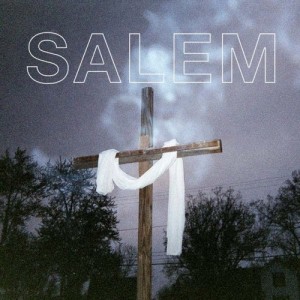
06: SALEM
KING NIGHT
(IAMSOUND)
;hl=en_US” />Loading Video…
;hl=en_US” allowscriptaccess=”always” allowfullscreen=”true”>
‘King Night’
A criticism that gets made of Salem is that they haven’t changed their sound since their first 7″. This seems to miss the point. What’s great about this group is that from early in their careers, they pinpointed a sound that they wanted to strive toward that hadn’t really been done before – namely, an unholy blend of horror synths, drum machines, wraithlike vocals and hip-hop – and set about honing it, without even half an eye on the musical movements going on around them.
King Night is the most powerful example of the Salem sound to date, drenched in static and distortion, with the band’s most beautiful moments (‘Traxx’, and the revamped version of early single ‘Redlights’) juxtaposed against some of their sparsest, most desolate lows (‘Trapdoor’, ‘Tair’). If this had come out two years ago there’d be nothing else like it; the fact that that’s not the case now is testament to just how influential Salem have been.

05: DARKSTAR
NORTH
(HYPERDUB)
;hl=en_US” />Loading Video…
;hl=en_US” allowscriptaccess=”always” allowfullscreen=”true”>
‘Dear Heartbeat’
When FACT interviewed Darkstar, then a duo, last year, it served to emphasise their image as an act confused about their own position in the musical landscape. Here were two Northerners living in London, with a simultaneous taste for guitar bands, hip-hop and garage struggling to work out how to absorb all of these influences into their own output. Meanwhile, their confessed love for computers was seemingly contradicted by a fear of losing the human elements to their music. In that interview they stated that their debut album would be released in early 2010 and hinted that it may be quite a departure from earlier singles.
To say that North is a departure is an understatement; it’s more of a total reinvention. At some point last winter what existed of the original record was semi-abandoned, Darkstar ceased being a production duo and – by adding a full-time vocalist, James Buttery – became a fully fledged band; dance music made way for melancholy, experimental synth-pop. In the ten months since their debut was originally due the group had completely reimagined themselves, and in the process, produced a fragile, engaging and emotionally driven full-length; one borne from the computerized claustrophobia of the modern era, humbly offering an incredibly satisfying – if temporary – escape.

04: TEENGIRL FANTASY
7AM
(MEROK)
;hl=en_US” />Loading Video…
;hl=en_US” allowscriptaccess=”always” allowfullscreen=”true”>
‘Dancing in Slow Motion’
Is it a sign of the times that some of the best house music of the year came from two college kids in Ohio with basic production equipment? Maybe it is, maybe it isn’t; Teengirl Fantasy doubtless don’t give a fuck. Logan Takahashi and Nick Weiss had always professed their love for Chez Damier, but it’s the nonchalance for house history – and, most vitally, the distance they keep from it – that makes their music special. On their debut album, 7AM, they make house music that’s completely free of pressure, standards and stigma; house music that melts down in front of your eyes, that’s as rough as any J Dilla record, and full of gloriously pop-rooted vocal samples.
In terms of the actual sounds used on this album, there’s comparisons to be made between Teengirl Fantasy and Animal Collective, but whereas 90% of Animal Collective’s career has seen them use these earthy tones to create something washed out and impenetrable (bar, obviously, during their later, more human moments such as ‘My Girls’ and ‘Summertime Clothes’), Teengirl Fantasy use them to create a world that’s inviting, human, and crucially, funky. ‘In the Rain’, for instance, pairs them with bouncy basslines and tropical drums, while ‘Koi Pond’ drowns them in drums more akin to a Paul Ritch or Plastikman record, and ‘Further the Feeling’ fits them into a playful melody that skips around you ‘til you’re dizzy.
There are two obvious stand-outs on 7AM, and they’re both among the tracks of the year – the incredible ‘Cheaters’, and ‘Dancing in Slow Motion’, a Polaroid-shot slow jam full of tumbling 808s, gongs and finger clicks; Light Asylum’s Shannon Funchess featuring with one of the vocal performances of the year. But perhaps what’s most impressive about 7AM is how much better these tracks sound in the context of the album; a perfectly arranged nine-track LP that makes complete sense as a whole, and arrives completely free of self-consciousness – a rare occurrence in an age where house music has a genuine problem simply letting go.
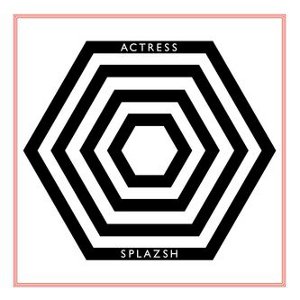
03: ACTRESS
SPLAZSH
(HONEST JON’S)
;hl=en_US” />Loading Video…
;hl=en_US” allowscriptaccess=”always” allowfullscreen=”true”>
‘Purrple Splazsh’
Following his perfectly formed debut Hazyville was always going to be a challenge for Darren Cunningham, but he acquitted himself with aplomb on Splazsh, enriching and enlarging his sound without compromising on the torrid weirdness that makes him so valuable.
The London-based producer displays here, more than ever before, an uncanny ability to craft grooves at once liquid and granular, fully justifying the Anthony ‘Shake’ Shakir comparisons regularly levelled at him. Deep house, grime, hip-hop, boogie-funk, minimal wave and electro influences exert themselves across the LP’s hypnotic duration, and Cunningham responds to each one in turn wittily and idiosyncratically, subtly subordinating them to his unique and clammy vision.
Throughout Splazsh it feels like we’re listening to an artist for whom techno is an inspiration, but not something that he wishes to imitate; indeed, techno is to Splazsh what garage was to Burial’s debut LP; ever-present, a foundation even, but somehow also a ghost, an impression, something only half-perceived – through a fug of blunted memory, YouTube overload and serotonin depletion. Crucially, though, there’s a flamboyance, and playfulness, to proceedings; it’s not all rain-grey melancholy, nightbus paranoia and makeshift Pot Noodle ashtrays. There’s life and colour everwhere: see the squashed funky house of ‘Always Human’, the sinewy Metroplexisms of ‘Let’s Fly’ or the overloaded dubstep-not-dubstep of ‘Wrong Potion’. Rather than being a cold-blooded enactment of “techno”, one of those wet-ink facsimiles churned out by Motor City Drum Ensemble or whoever, Splazsh is a beautiful, highly personal misinterpretation, or mishearing, of its tropes. Hauntological house, anyone? Or simply the first truly British-sounding techno album of the 21st century?

02: KANYE WEST
MY BEAUTIFUL DARK TWISTED FANTASY
(ROC NATION / DEF JAM)
;hl=en_GB” />Loading Video…
;hl=en_GB” allowscriptaccess=”always” allowfullscreen=”true”>
‘Runaway’ (feat. Pusha T)
What more can be said about Kanye West’s magnum opus that hasn’t been said to date? And we know, calling something a magnum opus is the biggest cliche in music writing, but if ever an album deserved it, it’s My Beautiful Dark Twisted Fantasy. The lead-up to the album involved outbursts on chat shows and Twitter, leaked nude pictures, and surprise performances at Facebook’s office and over the tannoy on a Delta Airlines flight. It didn’t do videos; instead, we had a thirty minute promotional film built around ‘Runaway’ and a “moving portrait” for ‘Power’. It was the biggest album of the year before it even came out.
And against all odds, maybe even miraculously, the music lived up to the hype. Each song is a grand narrative in itself, with subplots, solos, epilogues and some of the best-picked guest appearances of the year – Nicki Minaj’s show-stealing appearance on ‘Monster’ is an obvious call, but how smart a call is Rick Ross’s intro on the same track, for instance? It teeters on the balance between being a raw, cipher-driven hip-hop record and a capitalist pop behemoth, and somehow ends up giving you the best of both worlds. In a world of extended EPs, double-packs and “mini-albums”, where artists almost seem scared to commit to the full-length format (and when they do, particularly in hip-hop, we end up with bloated, filler-heavy albums), here, finally, was a huge pop album with content to match its ambition, and the greatest record that hip-hop’s biggest personality has made to date.
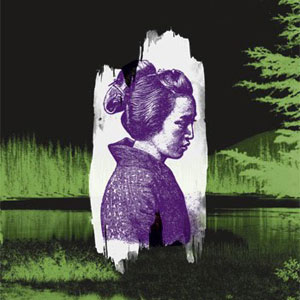
01: FOREST SWORDS
DAGGER PATHS
(OLDE ENGLISH SPELLING BEE)
;hl=en_US” />Loading Video…
;hl=en_US” allowscriptaccess=”always” allowfullscreen=”true”>
‘Miarches’
Forest Swords’ Dagger Paths is FACT’s album of 2010.
Collecting tracks from a couple of obscure cassettes, it was originally issued as a vinyl EP by New York’s Olde English Spelling Bee label back in February, and just last month was expanded for a UK album release by No Pain In Pop. Though the bonus tracks add a great deal, it’s the six tracks on the OESB 12″ that represent the most unified, moving and substantial musical statement we’ve heard all year.
This is an album that captivates from the off: as soon as you hear the opening strains of ‘Miarches’, you know that you’re being inducted into a completely unique, and very personal, sonic universe. It’s strange, in listening to music, how easy it can it be to forget about the musicians who make it – to focus only on the sound itself, rather than all the human activity that went into making it. Dagger Paths ,the work of a young, unassuming Wirral-dweller named Matt Barnes, never lets you forget that. Like an old blues recording, this is physical music, with all the flesh and blood and craft laid bare. Behind every one of its arcing, twanging Morricone-esque riffs, you can hear a hand patiently scraping across guitar strings, the sound echoing around the room it was recorded in. For all the heavy studio treatment, this is pretty much as raw and intimate as it’s got for us since Arthur Russell’s World Of Echo.
Forest Swords is one man, The Wirral’s Matt Barnes. With his dubwise predilection for gauzy textures and sensual fuzzy gasps, Burial and Fennesz are immediate reference points, but the more you live with the record, the more a distinctive, brutally minimalist aesthetic comes to the fore. The way Barnes arranges his sounds and rolls out his beats betrays his love of jagged R&B and hip-hop, but that pop sensibility is distended by his penchant for distant, anguished vocals, punishing drones and martial percussion sourced from the devil’s own dancehall.
Listening to Dagger Paths is like bearing witness to some very private act of catharsis. It’s an overwhelmingly sad record, but it’s incredibly beautiful too, and out of that beauty a cautious hopefulness emerges. 2010 was, for most people we know, a year of reflection, of realization that all is not well in the world and that the future, for better or worse, is more of a blank slate than previously imagined. Forest Swords’ Dagger Paths exquisitely hymns the anxiety and excitement of the age.




